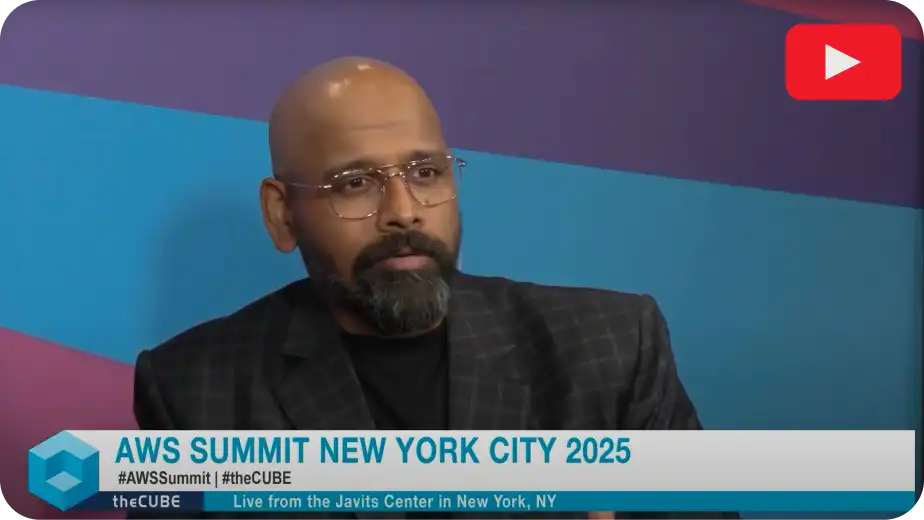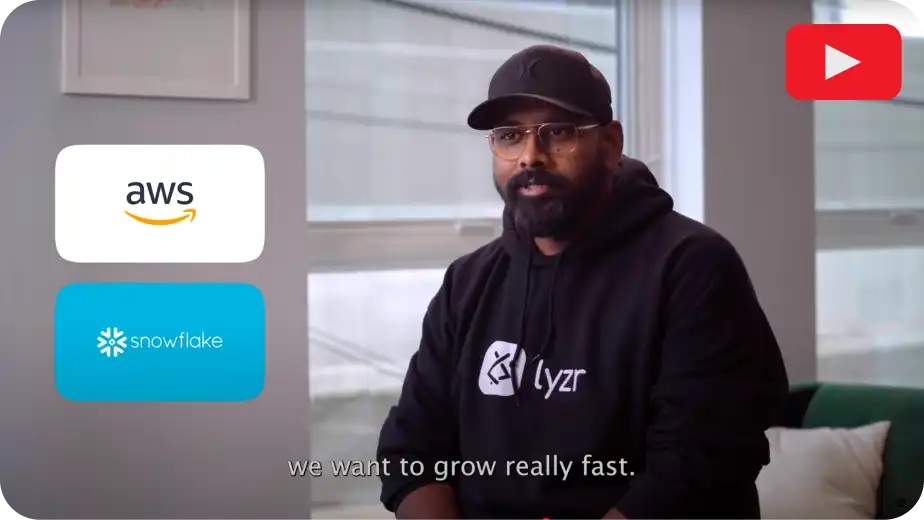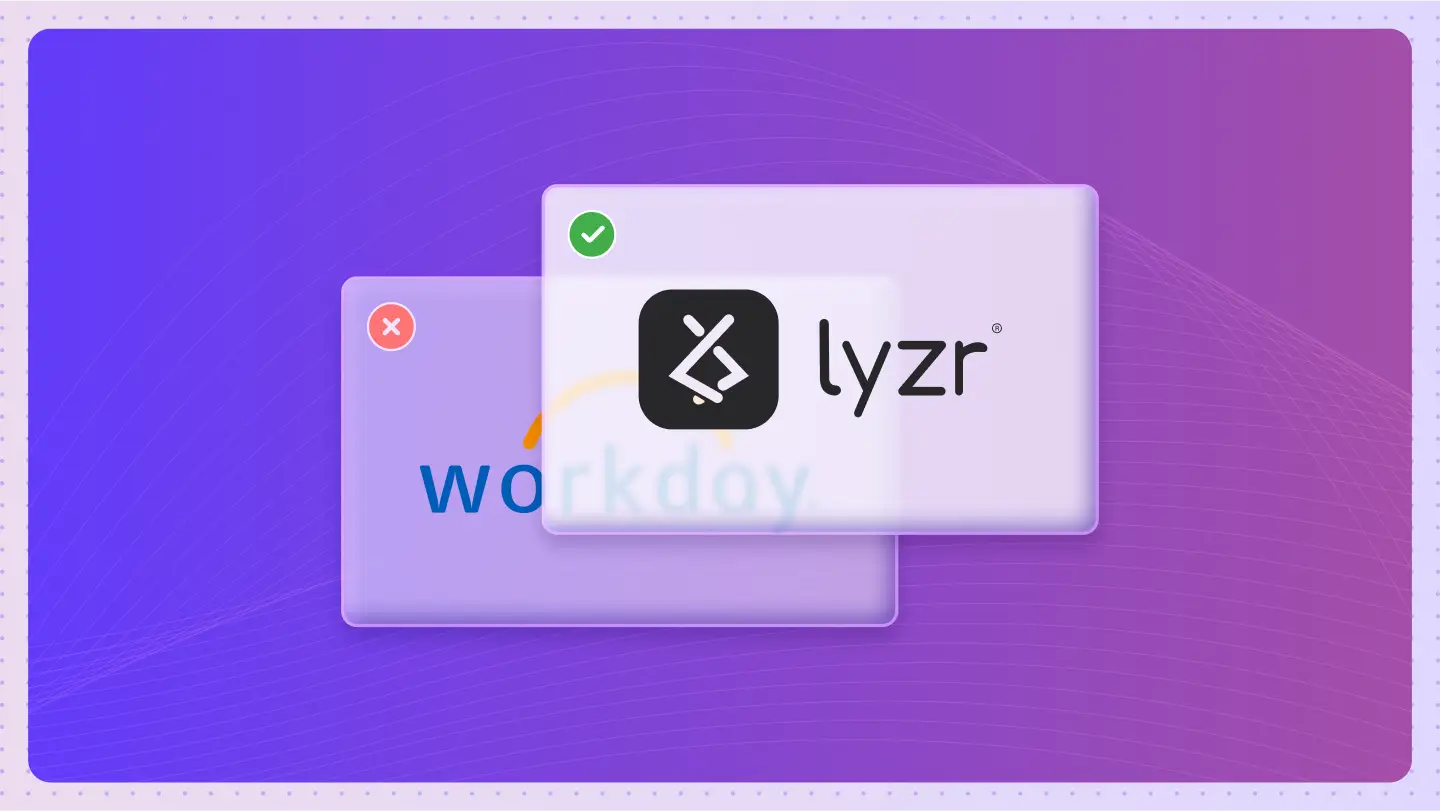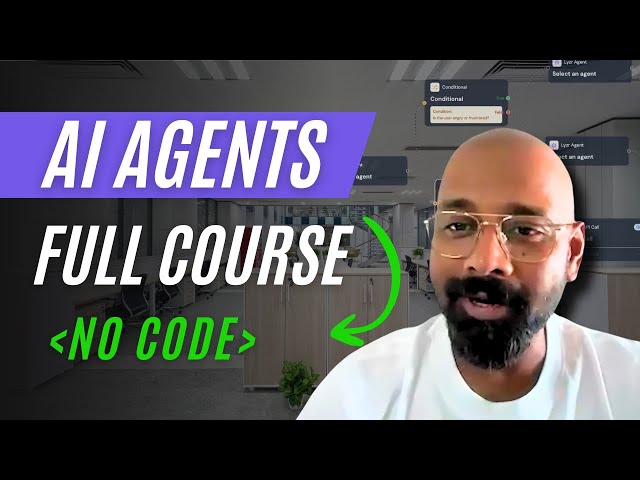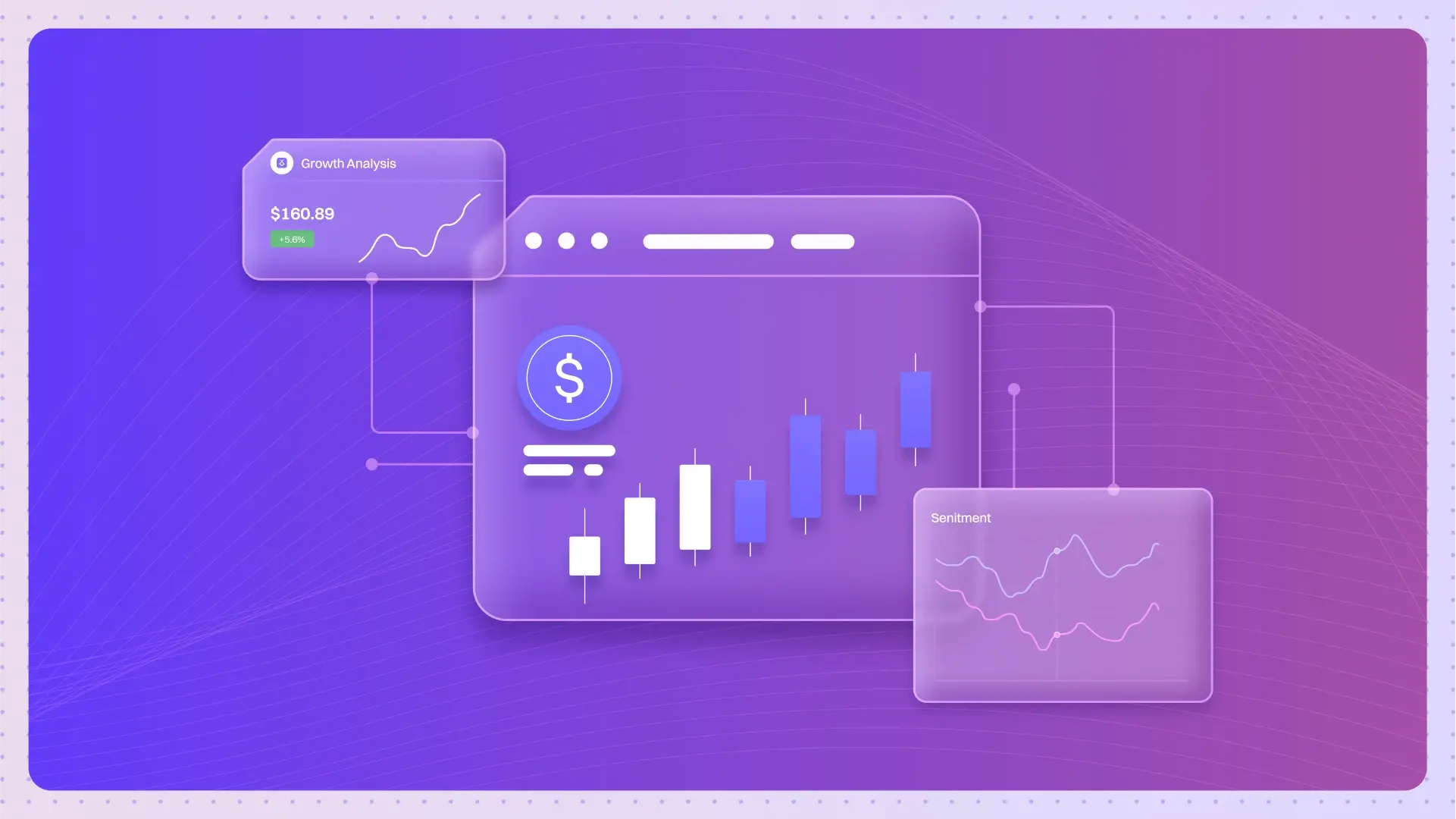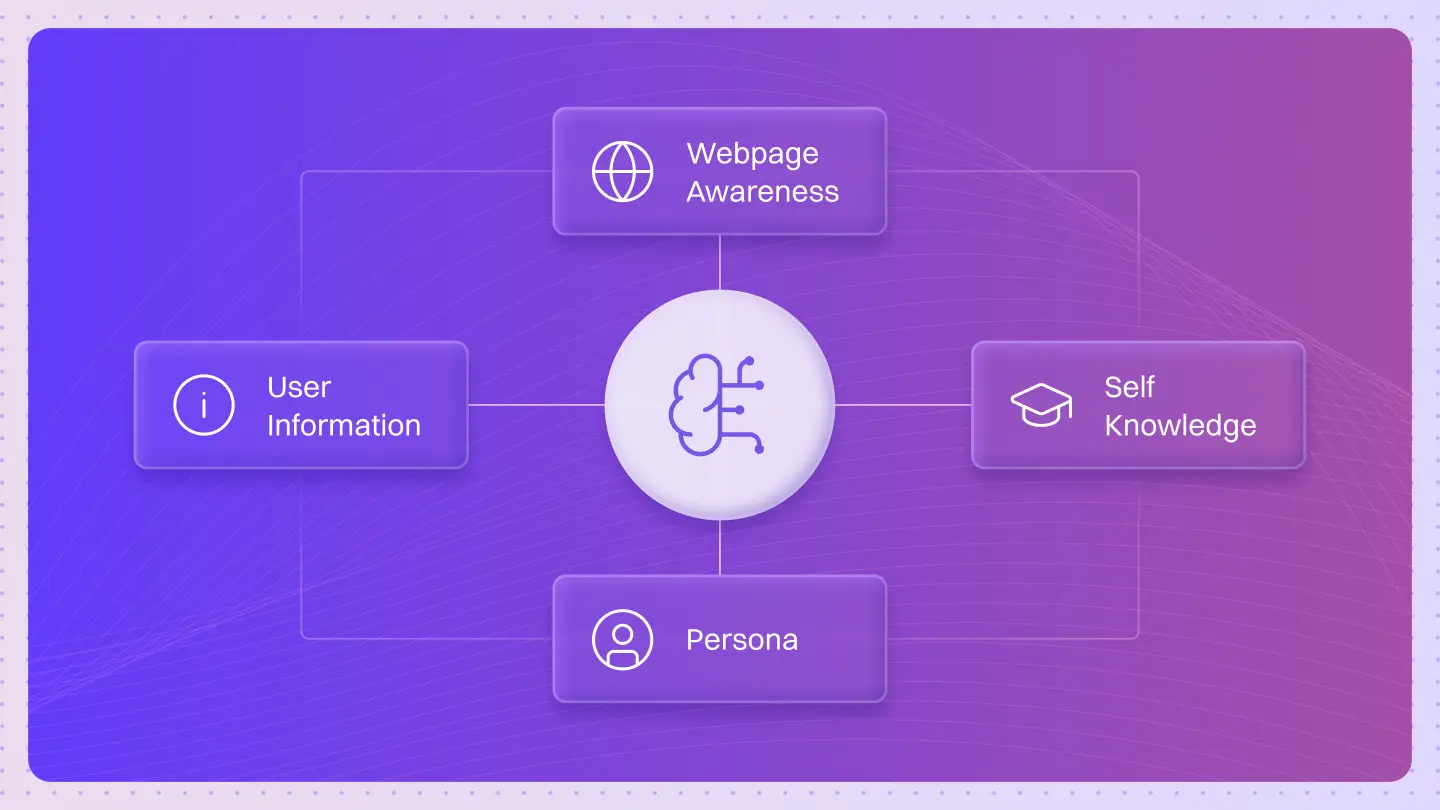Table of Contents
Toggle36 hours are spent, on average, to take one long-form article from brief to publish in an enterprise marketing team. Most of that time goes into everything but writing, SEO research, topic structuring, fact verification, image tagging, formatting, and multiple rounds of review.
These steps are critical, but they slow teams down. And in sectors like travel, where information is constantly changing, they also carry a higher risk of inaccuracy if done in haste.
While generative AI has become a part of the content workflow, most implementations still operate as isolated tools. They generate copy, but don’t reduce the operational load that surrounds it.
MOVE an OTA platform that does all the online marketing for its biggest airline partner AirAsia, faced a similar challenge. The goal wasn’t just to produce more content, it was to do it reliably, with the right checks, the right structure, and minimal manual effort.
Let’s look at what specific problems the team encountered, and how Lyzr agents helped solve them.
Challenge – Scaling Content with Precision
The marketing team at MOVE needed to produce content that was timely, accurate, and SEO-optimized, without increasing editorial overhead. But several bottlenecks across the workflow made this difficult to achieve.
| Area of Workflow | What Was Missing |
|---|---|
| Ideation & SEO | Scalable keyword discovery and topic planning |
| Drafting & Accuracy | Factually reliable AI-generated content |
| Visual Integration | Relevant images with SEO-ready metadata |
| Workflow Management | A structured pipeline from idea to publish |
| Editorial Involvement | Human input only where it added real value |
The key challenges were:
- Manual SEO research slowed down ideation: Each article required fresh keyword planning through external tools like SEMrush. Without a system to automate or reuse this input, content planning remained inconsistent and time-consuming.
- Factual accuracy couldn’t be left to chance: Articles often referenced live data, flight routes, costs, travel timelines. AI-generated drafts risked hallucinating facts or presenting outdated details, requiring additional human review.
- Visuals were disconnected from the content strategy: Image selection typically came late in the process, with little relevance to the article or attention to SEO tags like alt text and captions.
- The workflow was fragmented across tools and teams: Ideation, drafting, formatting, and visual handling happened in separate systems. Without a central workflow, content production couldn’t scale predictably.
- Human effort was spent correcting, not creating: Writers and editors were focused on formatting, structuring, and fact-checking AI output, rather than shaping the narrative or making final editorial decisions.
The team needed a new approach, one where AI could take over the repeatable tasks, and humans could focus on decisions that required context, nuance, and judgment.
How the Content Workflow Was Rebuilt with AI Agents
Instead of relying on disconnected tools or one-off automation scripts, the MOVE Marketing team opted for a structured, agent-led workflow built using Lyzr AI Agent Studio and deployed on Google Cloud Platform (GCP). The goal was to redesign the content lifecycle, from ideation to final output, into a repeatable, intelligent pipeline.
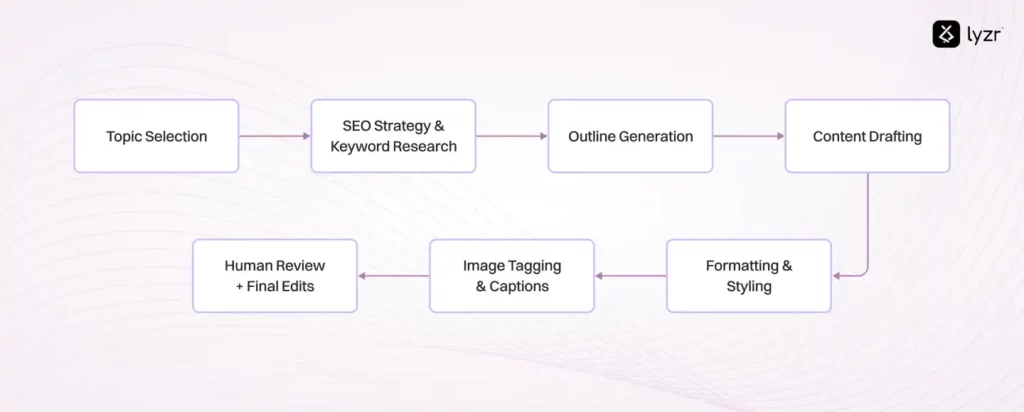
This system didn’t replace human input. It repositioned it, so marketers could focus on decision points, while AI handled execution across well-defined stages.
The solution was built around three key principles:
- Modular AI agents handled specific tasks with focused logic
- Cloud-native infrastructure enabled scalability and low maintenance
- Human-in-the-loop checkpoints ensured control over accuracy and tone
Content Workflow Overview
Here’s how a typical content piece moved through the new system:
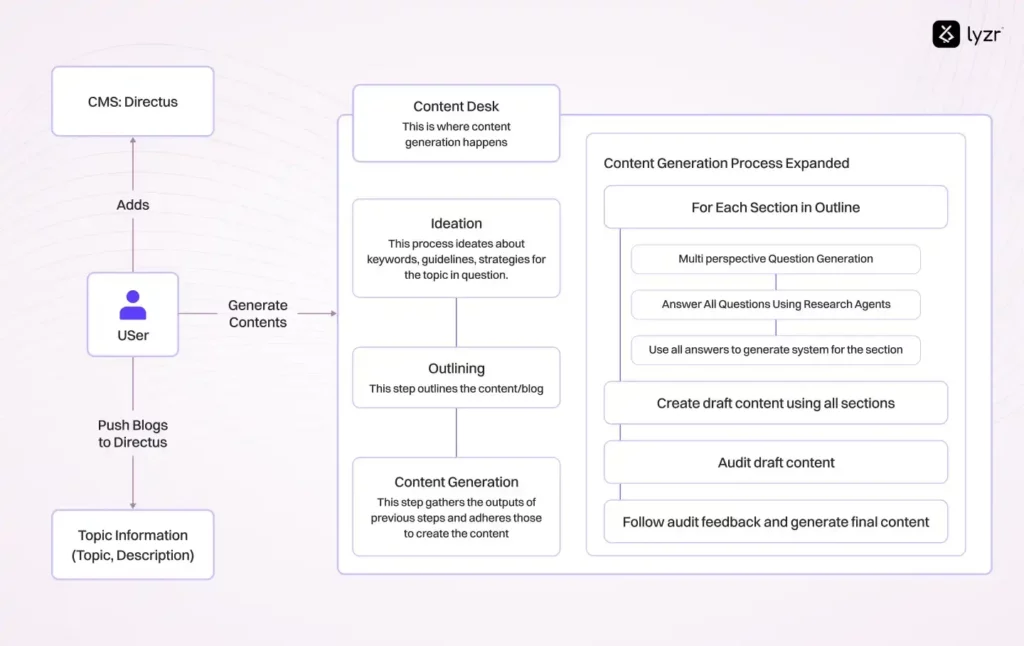
- Each block above was powered by a dedicated AI agent
- Each step fed into the next, creating continuity and context
- Human input was built into two stages: the beginning (topic/strategy) and the end (final review)
Where It Was Built: Google Cloud Architecture
The full system was deployed on GCP using a set of scalable, managed services. This included:
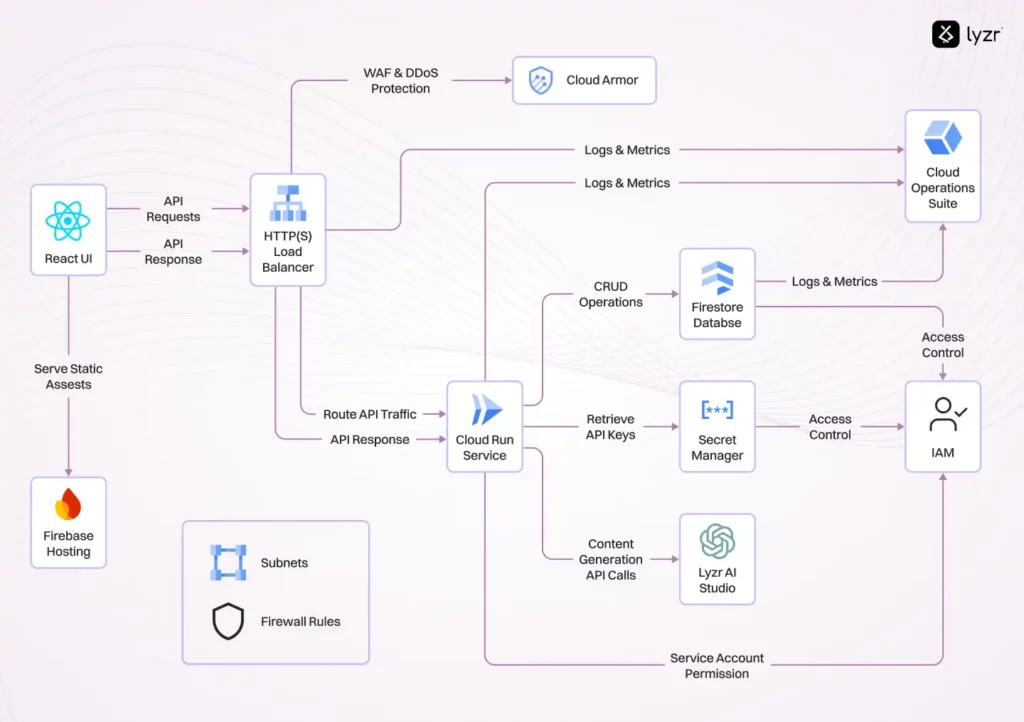
- Google Cloud Run for hosting the backend service (agent orchestration, workflow execution)
- Firebase Hosting for the web interface used by marketing teams
- Cloud Firestore to store user data, knowledge bases, and all generated content metadata
- Optional fallback: Google Kubernetes Engine (GKE) or MongoDB Atlas on GCP, depending on scale or compatibility requirements
Why GCP + Lyzr Agent Studio?
The choice to build with GCP and Lyzr Agent Studio was driven by:

- Container-first deployment: Cloud Run made it easy to scale based on load without managing infrastructure
- Security + data control: Firestore enabled secure storage of user and content data with structured access control
- Agent modularity: Lyzr allowed the team to define specific responsibilities for each AI agent and trigger them only when required, rather than depending on a single monolithic LLM call
Architecture in Action – From Workflow Logic to Deployment
To support the redesigned content workflow, the engineering team built a modular system on Google Cloud Platform (GCP), integrating Lyzr AI agents for generation tasks. Each component was selected for scalability, control, and ease of integration.
System Components at a Glance
| Layer | Technology Used | Purpose |
|---|---|---|
| Backend Service | Cloud Run | Orchestrates the content workflow and triggers agents |
| Frontend UI | Firebase Hosting | Provides the marketer-facing web interface |
| Database | Cloud Firestore | Stores user data, knowledge inputs, and generated content |
| AI Agent Layer | Lyzr Agent Studio (API) | Executes modular AI tasks (ideation, outlining, drafting, etc.) |
| Alt. Options | GKE / MongoDB Atlas | Optional for advanced orchestration or existing database compatibility |
Frontend: Marketer-Facing Controls
Built on React and hosted with Firebase, the web app allowed non-technical users to:
- Define content topics and SEO intent
- Upload internal documents or research
- Review outlines and drafts
- Provide feedback or final edits before publishing
If needed, the system could be migrated to a GCS + Cloud CDN stack for static hosting.
Backend: Workflow Execution
The backend was deployed via Cloud Run and acted as the orchestration hub. It handled:
- Secure API calls to Lyzr agents
- Managing the order of operations (ideation → outline → draft → metadata)
- Connecting with the frontend and database layers
- User management and access control
Agent Responsibilities by Stage
| Stage | Agent Function | Triggered By |
|---|---|---|
| Ideation | Keyword discovery, topic strategy | User-defined topic |
| Research | Internet + knowledge base data retrieval | Ideation output |
| Outline Generation | Structured headings and flow | Approved strategy |
| Content Drafting | Section-wise generation | Outline |
| Formatting & Styling | Consistency, tone, readability | Drafted content |
| Image Captioning & Tags | Metadata generation for visuals | Uploaded images |
Each agent was modular, stateless, and invoked only when required, helping reduce latency, improve traceability, and keep the system easy to debug.
AI Agents in the Loop: Specialized Roles, Coordinated Output
With the system architecture in place, each AI agent was integrated into a defined stage of the workflow. Rather than using a general-purpose model for all tasks, the solution used specialized agents, each with a focused role, clear trigger point, and predictable output.
This structure made the system easier to scale, troubleshoot, and evolve over time.
Research & Strategy Agents
These agents handled the earliest stages of content creation, gathering context, defining the SEO direction, and validating whether the system had enough internal data to proceed. Their job was to turn a general topic into a structured brief that downstream agents could use.
| Agent Name | Role | Model Used |
|---|---|---|
| Query Generator Agent | Creates contextual queries for research based on topic input | Nova Pro (Amazon Bedrock) |
| SEO Analyst Agent | Identifies keywords, search intent, and SEO strategy guidelines | sonar-reasoning-pro (Perplexity) |
| Data Sufficiency Checker | Checks if the internal knowledge base can support the topic | Nova Pro (Amazon Bedrock) |
| Question Researcher Agent | Retrieves missing information from internet sources | sonar-reasoning-pro (Perplexity) |
Content Development Agents
Once the brief was ready, this set of agents converted research into structure and structured inputs into polished content. They operated in a clear sequence, from outlining to drafting to refining the final article.
| Agent Name | Role | Model Used |
|---|---|---|
| Outlining Agent | Builds structured headings and subheadings for the article | Nova Pro (Amazon Bedrock) |
| Content Generator Agent | Drafts section-wise content using research inputs and structure | Nova Pro (Amazon Bedrock) |
| Content Formatter Agent | Applies formatting, tone checks, and stylistic consistency | Nova Pro (Amazon Bedrock) |
Visual Integration Agent
To support richer, SEO-friendly content, this agent matched relevant images with article sections and generated metadata, removing the need for manual tagging.
| Agent Name | Role | Model Used |
|---|---|---|
| Image & Caption Suggester | Suggests relevant visuals, generates alt-text, captions | Nova Pro (Amazon Bedrock) |
Human Checkpoints Remained Intact
Despite automation across stages, the system preserved two critical points of human judgment:
- Before Generation: Topic selection, tone preferences, and document inputs were defined by marketers.
- After Generation: Editors reviewed, modified, and finalized drafts before publishing.
This ensured that AI remained a contributor, not a decision-maker, in the content workflow.
Impact of the Agent-Led Workflow
The adoption of an agent-led system brought meaningful change to how MOVE’s marketing team created content. The improvement wasn’t just in speed, it was in clarity, structure, and how work moved through the system.
- Faster start-to-finish turnaround: With ideation, research, and outlining handled by agents, content creation no longer started from a blank page. Writers received structured inputs and early drafts faster, accelerating the entire process.
- Fewer bottlenecks between steps: Each stage in the workflow handed off cleanly to the next. Once ideation was complete, outlining followed automatically. Drafts were formatted without waiting on manual input. Fewer handoffs meant fewer delays.
- Higher confidence in content accuracy: Agents like the sufficiency checker and researcher reduced the risk of hallucinated or outdated facts. Editors could rely on more accurate drafts, saving time otherwise spent on corrections.
- Structured human review, not rework: Human involvement was repositioned, not removed. Strategic inputs came before generation, and final reviews happened at the end. Editors spent more time refining the message, not fixing structure or formatting.
- A workflow that could be reused and scaled: Once the system was in place, creating new articles followed the same path. Topics could be replicated with adjusted inputs, giving the team a repeatable model instead of rebuilding each time.
Closing Notes
MOVE set out to solve a clear operational challenge: increase the scale and quality of its marketing content without increasing manual workload or compromising accuracy.
By adopting an agent-led architecture built on GCP and powered by Lyzr AI Agent Studio, the team established a repeatable content pipeline, one that brought structure to ideation, reliability to drafting, and precision to execution.
The system reduced editorial overhead, introduced workflow clarity, and preserved human judgment where it mattered. More importantly, it offered a framework that can now be extended beyond marketing into other business functions that rely on structured content or repetitive tasks.
What started as a marketing use case has now created a foundation for how MOVE approaches intelligent automation across teams.
Want to build something similar?
Book a demo with the Lyzr team and see how agent-led workflows can be applied to your content, operations, or internal automation needs.
Book A Demo: Click Here
Join our Slack: Click Here
Link to our GitHub: Click Here



